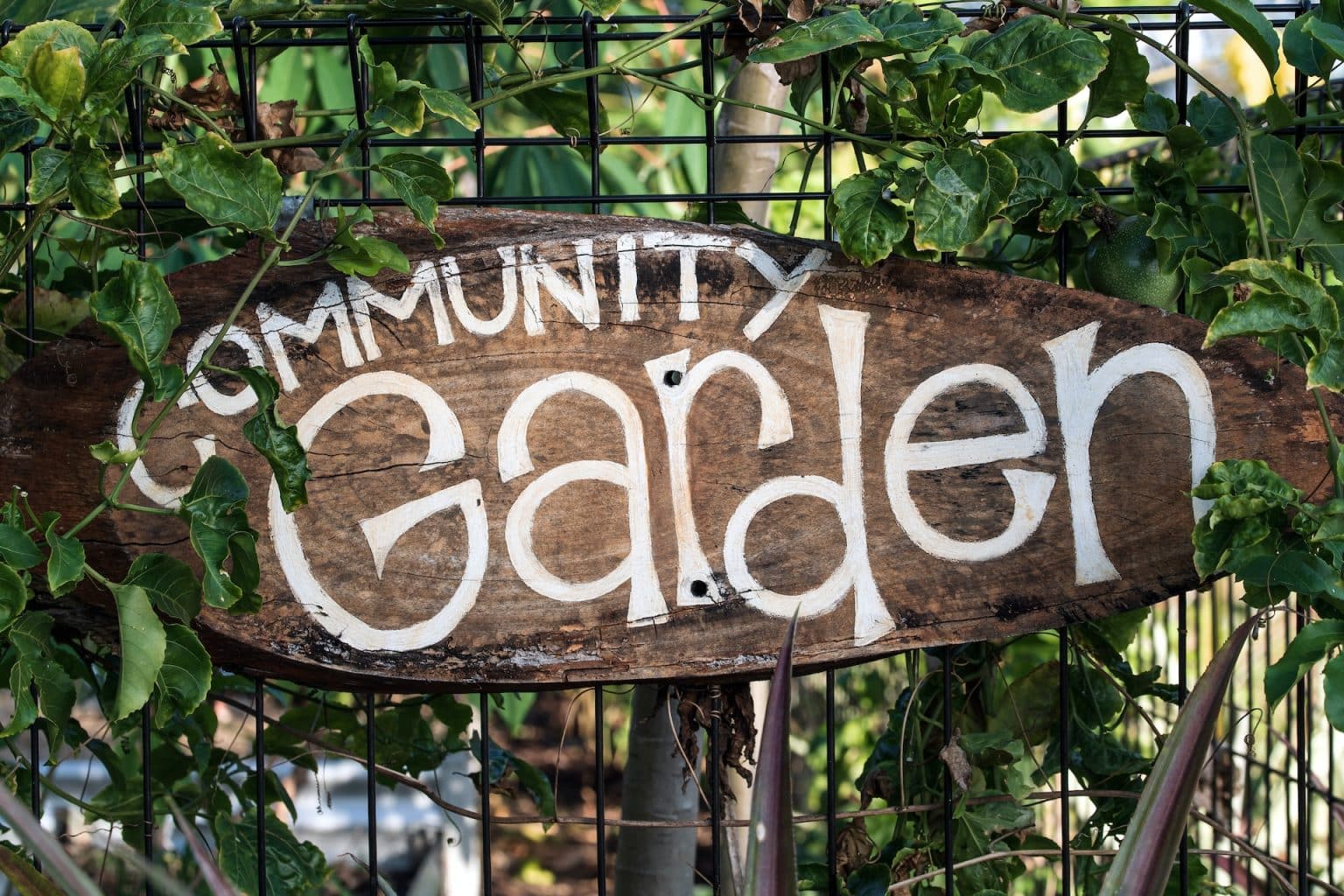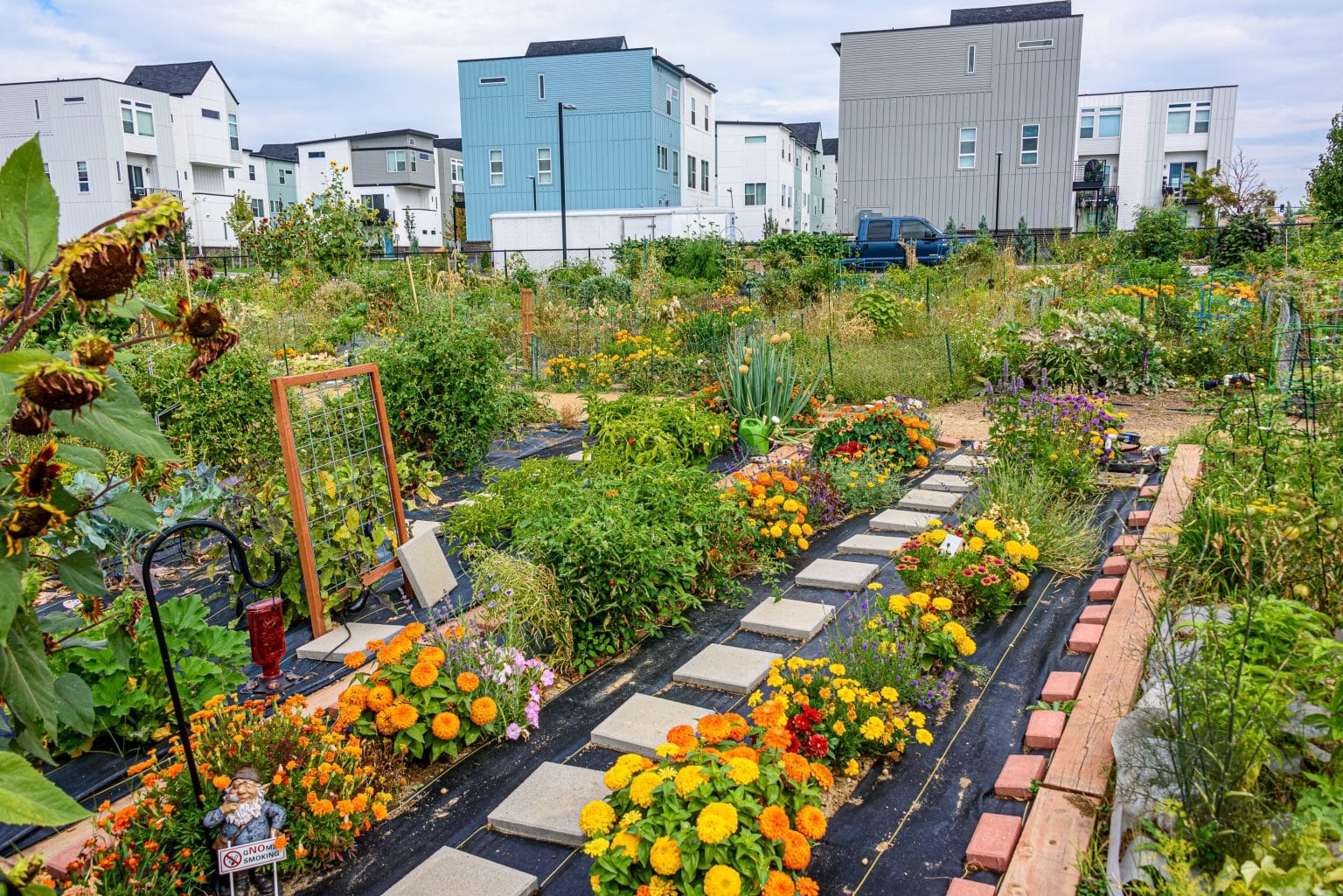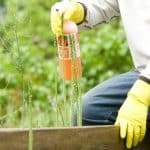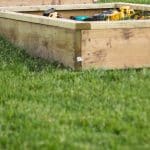Table of Contents
As an undertaking, a community garden is akin to throwing a potluck dinner. Different folks, graced with varied skills, pool in handy resources and their love for nature in nurturing a common goal. And the goal is as simple as it sounds – to grow food within a community space. While the coinage ‘community garden’ may sound posh, this innovative initiative has its roots dating back to the Victory Gardens of World War II. It’s pretty much like the good old farming practices, but in a fancier hat and a smaller plot of land.
Hats off to interested community gardeners, your green thumbs are about to do some good to your community health, fresh food availability, and a fair share of basic maintenance and hard work. Not to rain on your parade, but startup costs need to be considered and may require creativity and resourcefulness to handle. A solid handshake with community organizations, universities cooperative extension, or the Department of Agriculture can help you out, but before you plunge in directly, let the idea marinate well before it’s cooked. So, let’s begin with the basics of Community Gardening.
Introduction to Community Gardening
For folks on the other side of the vegetable patch, community gardening may seem a wee bit tricky to catch. Picture it like this – a few good men, women, and children bound by their love for nature, come together. They roll up their sleeves, buckle down to some real hard work, and what you get is a bountiful garden filled with the freshest of veggies, herbs, and fruits, right in your neighborhood. Talk about eating local! Not to forget it’s more than just greens and dirt, the benefits multiply like rabbits – it fosters camaraderie among members, adds green spaces to urban areas, offers learning opportunities, and most importantly, provides a golden ticket to a healthier community.
The inviting aroma of fresh herbs, the vibrant colors of seasonal fruits, and a playground for kids – a community garden fuels learning, fun, and engenders a sense of achievement. Your backyard could transform into this fantastic spot, invoking respect for nature and engaging in a lively exchange of ideas among garden mates. Did you know, one of the best things about nurturing a community garden is belting out the tunes of togetherness, connecting generations, and making ’em participate in an endeavor as wholesome as this? Go ahead, invite the neighbors and let them be a part of a cause that redefines the true sense of a neighborhood!

Important Steps in Establishing a Community Garden
Every successful journey thrives on a well-crafted plan. Building a community garden is no different, requiring a step-by-step investment of effort. Need cues? Gather your firepower, rally your troops, and follow these mantras: Food safety is top priority, embrace the urban agriculture revolution, keep the garden running smoothly with business and organizations’ involvement, rope in government officials to survey progress and don’t forget to set rules for family plot allotments and a space for that coveted picnic table. Remember the valuable tip shared by doctors – an apple a day keeps the doctor away; similarly, a plan well-exeuted per day, keeps the chaos at bay.
Forming a Core Team and Gathering Community Input
All great things have a humble, yet strong beginning. Gather around folks who have got the garden fever! Forming a core team is stepping stone numero uno. Keep a fair mix of folks – those who can connect with the community, rookies who are learning the ropes, and seasoned garden organizers who know their soils like the back of their hand. What’s important here is understanding the skills each member brings to the table, interests they harbor, and how these can be utilized for the benefit of the garden and the community. It’s time to survey the land not just for the soil and sunlight but also for nurturing kinship amongst members. Let’s dig in deeper!
Devising a Purpose, Vision, and Action Plan
In any community garden project, it’s quintessential to set a common purpose and vision shared by all. Is the community garden aiming to be a bigwig in growing organic produce or is it a soothing getaway for families to grow and harvest their greens? The brainstorm of ideas can carve out a clear path for your green journey. Chalk out an action plan that everyone understands, agrees, and sticks to. This plan serves like an amoeba, constantly evolving and adding newer goals at every stage of growth. It’s not just valuable for accountability, but it also makes way for hardworking gardeners to negotiate a more stable lease for the garden land.
Answering Initial Garden Questions Necessary for Planning
When laying the initial bricks for your community garden project, a whole barrage of questions from gardeners can seem like a hornet’s nest. The key to cracking the code is to remember – the more we sow today, the more we reap in future. From garden rules and guidelines to team decisions and leadership roles, these initial planning steps are no lesser than the 10 steps to a successful business empire. You bet, the challenge is all worth it! With every garden plot, members get closer to reduced dependencies on commercial markets and step towards building a self sustainable community, growing one seed at a time.
Finding Available Land and Securing Tenure
Alrighty then, let’s get to the root of things, friends. Step uno in starting a community garden involves locking down a good spot of available land. Now, picture an old, vacant lot, unused and lonely, just begging for a bit of community love. Fetch the necessary permissions—brownie points if it’s public property—and get ready for the green thumb revamp. Be aware of the zoning laws, wouldn’t want to step on any official toes, right? Furthermore, you might need to lease this patch of heaven, remember, a little goes a long way during the growing season. Might even have to get a community piggy bank going, but hey, it’s all in the name of community love. So, what are you waiting for?
Engaging and Mobilizing Your Community
Now, there’s a magic to a community garden, a little like the magic in pulling a bunny out of a top-hat. Bet you didn’t see that coming, ha! Once you’ve your piece of heaven, it’s time to transform it into an Eden according to the American Community Gardening Association, it’s all about growing food, fruits, flowers, you name it, which benefits the whole community. Now, we’re not talking about taters growing on trees or strawberries scooting around on their leaves (I wish!). We’re talking about creating a sense of shared achievement, shared purpose. It’s all about togetherness, folks!
Site Design and Preparation
Once we’ve got the troops rallied, we’re onto the landscaping bit. It’s like designing a puzzle, friends, laying down pieces one at a time. Designing and building a community garden—the whole shebang. The garden design is the rub—what goes where and how, think raised beds, compost bins, study the sunlight and shadows, workout the irrigation—phew! Ready your clipboards, we’re going full Sherlock! The garden management is key, too. Who’s going to do the weeding, the watering, who’s growing food, who’s dealing with the bugs? It’s a dynamic jigsaw puzzle. So, step on that pedal and gear up, folks!
Choosing What to Plant & Building a Communal Space
Once the garden plan looks slick, we’re onto to the star of the show—selecting what to plant. While it’s easy to get carried away dreaming about a jungle of exotic plants, remember the choice of plants needs to be a cool mix of local climate conditions and preferences of community members. You might want to put down that pineapple and opt for a tomato plant instead. Stick to veggies that can brave the local climate. Creating a space where folks can connect with nature and fellow community members is equally important—it’s more than just flexing your green thumbs, it’s about growing a sense of community, too.
Deciding What to Grow in Your Community Garden
Alright, it’s go-time! The garden is growing and community members are on board. Time to take stock and call the shots on what your green corner will house. You might opt for some easy-going veggies, like tomatoes or herbs, or maybe you’re after more of a challenge and fancy some fancy gourds or profuse pumpkins! Don’t be shy to try out a few and see what works. But remember, folks, key is to keep things manageable. Our garden is more than just the sum of their parts, she’s also about the joy and achievement of working together, sharin’ the burden, and trust me, those meals in the garden with fresh produce are gonna be something else.
Once the wheels are set into motion—digging, weeding, planting—it’s time for some basic maintenance. It’s just like combing your hair or brushing your teeth, every garden, no matter how big or small, needs some tender love and care. Together, as garden members, you’re not just helping plants grow, you’re feeding the community and supporting each other. See that, meals in the garden and a well-stocked local food pantry—ain’t that a sight for sore eyes!
The Science Behind Soil Testing
Okay, lockdown your hats, we’re about to tromp into the world of soil testing. Picture yourself as a plant detective, on the trail of nutrients and mojo in the dirt. Starting your soil probe, you might stumble across some valuable clues about what’s going to grow best in your spot. Believe you me, a soil test is key, it’s like peeking into Mother Nature’s recipe book. You’re looking for the right minerals, the right pH for your plants to thrive. Those county extension offices connected to the Department of Agriculture are a heck of a resource for getting this done. So roll up your sleeves, folks! It’s time to dig into the world of soil!
Dirt and soil might look the same to the naked eye, but the truth is far from it. Soil testing helps us uncover these differences and ensure that our plants get the right nutrients they need to grow. Never underestimate the power of good dirt, folks! It’s the very bedrock of your garden and trust me, a well-fed garden is a happy garden. So, let the Department of Agriculture be your guide and unlock the secrets of your soil.
Establishing Raised-Bed Gardening
Settin’ up a community garden needs some hearty planning, however, when it comes to garden beds, consider going up, not out. Raised beds, smart selections for any green thumb, offer some kickin’ benefits. For starters, they give better drainage, and their maintenance is, like Sunday morning coffee, easy on ya. Crucial to remember, especially when you’re dealing with public land that’s more parched than a cactus. Plus, higher yields are often the fruits of raised beds labor, so to speak. More crops mean extended growing seasons, so you can really put your green thumb to work.
However, everything ain’t all sunshine and daisy in the raised-bed garden scene. They can be expensive to build due to the cost of materials, compost, and soil. That’s like buying the best steak for a barbecue but remembering you’re a vegetarian. In roasting summer, the soil in raised beds might dry out faster than a snowball in July. But don’t let this curb your enthusiasm. With careful planning and wise use of resources, establishing raised-bed gardening can be just what your community garden needs.

Organizing and Managing Your Community Garden
Getting your community garden project off the ground ain’t just about turning soil and planting seeds. It’s about organizing a system that ensures that everything in the garden works as smoothly as a well-oiled tractor. Think garden clubs, recreation departments, and extension educators coming together to sort out everything from children’s garden to public health law. Imagine fresh fruits and vegetables being grown and harvested specifically for local food pantries by community members, all tending collectively to the public land under the overseeing eye of the garden coordinator. It’s like a master plan where everyone has a role, and the goal is to have a thriving garden that serves the community. And in situations where some folks are unable to participate directly, their interests are represented; plots assigned and looked after so that no part of the garden is left untended. With a focus on building growing communities, employing the right pest management, composting techniques, and legal toolkit for community gardens, successfully sorting out things to start a new community garden doesn’t have to seem like climbing the north face of Mount Everest.
Forming a Planning Committee for Better Management
Your garden’s success is as much about the green in the garden as the people managing it. Forming a good planning committee is a lot like gathering compost for your yard; each contribution brings something unique yet equally vital. Having a garden coordinator is like having an old reliable pickup truck; it keeps everything and everyone up and running. Your committee will need to be just as reliable, adept at managing a community garden full of tomatoes as they are at organizing educational gardens for children. This ensures that the community extends beyond offering fresh produce and evolves into an educational sphere where knowledge and experiences are shared as freely as zucchinis in August.
Finding Suitable Sponsors and Supporters
In this journey of greening neighborhoods, you ain’t alone. It’s like a square dance – you need partners. There’s more than one way to fund a community garden. You got your garden club membership dues, true. But then there are sponsorships. It’s about looking around for who would benefit from having a riot of color and a fresh bunch of goods in their town. It’s similar to asking old Tom at the general store to help with the town fair – you approach town departments, civic groups, maybe even local churches. You show them how they stand to benefit, how aiding this garden is like watering their own community flowers.
Setting Rules and Enforcing Them
Once your garden’s up and sprouting, it’s time to lay down some ground rules. Yes, rules, because what’s a garden without some order? It ain’t a wildflower field, after all. First things first, the watering schedule; there needs to be a consensus on who’s turn it is to water the garden. Then weeding, because letting them run amuck will only land you a garden that looks it has lost its comb. If you’re going organic gardening, you’ll need to protect individual plots from over-spray of no-no chemicals. It’s the harvest season, and once you got your rules in place, you’ve got a well-managed garden. Restrictive? Nah, consider it more like tending to the legal issues before they sprout up.
Wrapping Up: Building Communities Through Gardens
Nothing draws folks together quite like rolling up their sleeves and digging in the dirt. Community garden leaders tend to get a front-row seat to spectacular transformations, not just in the soil, but in those good folks who get down ‘n dirty. And wouldn’t you know it, the whole experience connects neighborhoods in ways that are more than skin deep.
Through garden projects, people aren’t just nurturing seedlings into full-grown plants, but they’re also nurturing bonds with their neighbors. Whether it’s fussing over top-notch tomatoes or sharing secrets of food preservation, every bit counts in making the community a better place to live in. It’s about more than creating nice parks. It’s the essence of creating communities that care and support each other. A little green thumb goes a long way in knitting them strong relationships. So grab your gloves, folks, and let the gardening begin!

I’m John, a “seasoned citizen” and an avid gardener. I live in Minnesota, where our weather and growing conditions can be harsh and challenging. Over the years, I have learned a thing or two about being successful in growing things. I have curated these tips, which I think are helpful for the beginning gardener and the seasoned experts. If you have feedback, let me know in the contact form.




